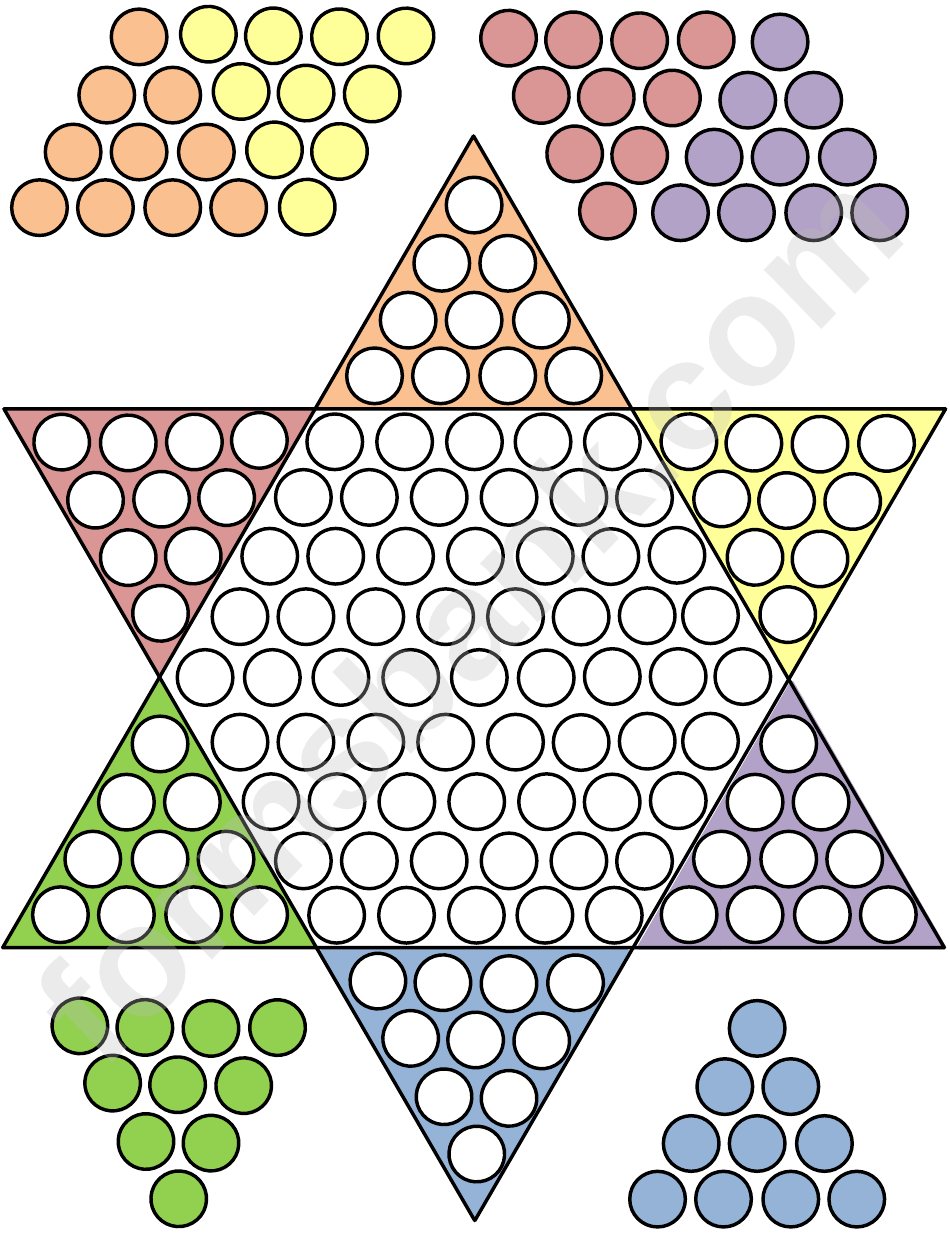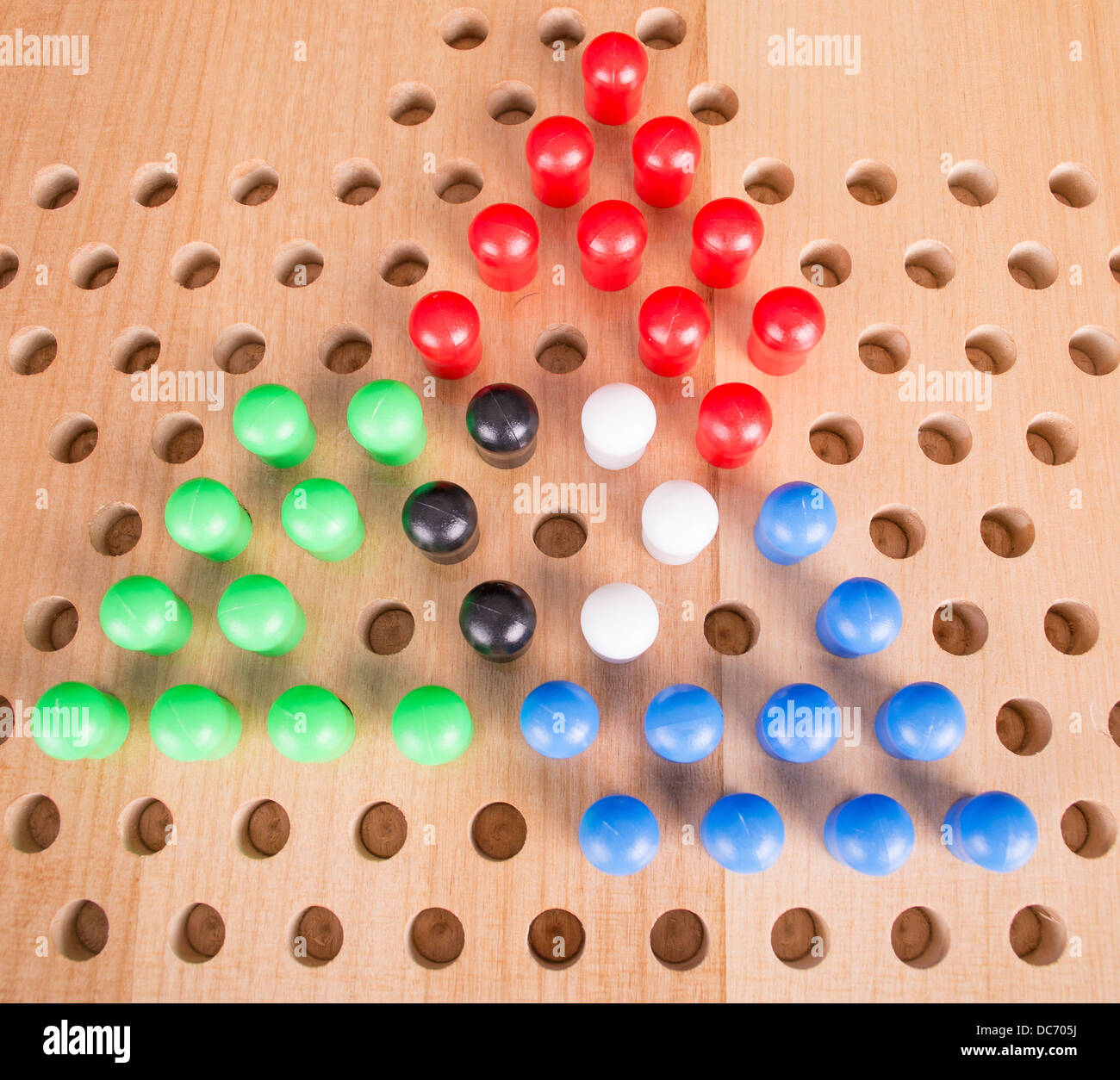
Obviously, for the six player game, all pegs and triangles are used.

PreparationĬhinese Checkers can be played by two, three, four or six players. Each triangle is a different colour and there are six sets of ten pegs with corresponding colours. The interior of the board is a hexagon with each side five holes long. Each point of the star is a triangle consisting of ten holes (four holes to each side). What are Games LikeThe Chinese Checkers or Chinese Chequers board is in the shape of a six pointed star. This is useful because pieces that are on the very edge are unable to get taken by your opponent, making this a very powerful position to move to. The best first move in Chess is to immediately move your piece in the front row to the edge of the board and establish the outside attack. Each team has its pieces divided equally among 3 rows, which means that there are 4 pieces on each row. There are 24 pieces in Checkers, with 12 on the white side and 12 on the black side. In fact, most historians think that it goes back thousands of years, all the way back to the predynastic period. How old is Checkers?Ĭheckers goes back an incredibly long way. Make sure to be on the lookout for double and triple jumps, they are extremely important to execute if you want to win. You can even make a triple jump if the pieces are lined up properly for it. Of course you can! As long as you can take out another piece after jumping, it is completely legal to double jump. We can say for certain that they are both tons of fun to play! You can find both of them on our Classic Games Playlist. They’re so different, so unique to one another, so there’s not much point in even trying to decide which is easier. While Chess does have more variables to consider, it’s kind of like comparing apples and oranges. It’s really the case of apples and oranges. While they are played on the same board, Chess and Checkers are extremely different. Which game is easier – Chess or Checkers? Your pieces can only move forward one tile diagonally (they always stay on the brown tiles). Use your mouse to move your pieces around the board. The goal of Checkers, or "Draughts" is to remove all your opponent's pieces from the board. Playing Checkers teaches basic spatial awareness and boosts problem-solving skills and memory recall. If you’re ahead in the game, it may be beneficial to sacrifice or trade some of your pieces if it means obtaining more opposing pieces and advancing further across the board. Blocking the enemy will automatically hand you the victory. It may be a bit tricky, but as you move your pieces across the board, look for opportunities to create a wall around your opponent’s checkers. Your opponent loses when you capture all of their pieces or if they can no longer make any moves. In Checkers, the player with more kinged pieces on the table is the one most likely to win the match, so it’s best to start early! Set up a blockade Focus on the endgameĪt the start of the game, you should put all your focus on moving as many pieces as you can to the other side of the board to build a team of Kings. Keeping your home row occupied will prevent your opponent from making Kings and gives you an opportunity to jump and capture any opposing pieces that come too close. The back row of checkers on either side is called the “home row.” It’s best to keep this row in reserve until you need the pieces most. It may seem like you’re more vulnerable to attacks from this position, but ultimately, claiming the center will give you more mobility. However, it’s best to advance your pieces toward the center. Rookie players sometimes rely on the sides of the board for safety, since pieces on the sides cannot be jumped. Not to worry though, there are a few key strategies that you can use to win some games. While Checkers is not quite as popular as a game like Chess, there is still a lot of strategy involved. You win by removing all of your opponent's pieces from the board, or if your opponent can't make a move. They can even combine jumps forward and backward on the same turn! Kings can move and jump diagonally in any direction. If one of your pieces gets to the opposite side of the board (your opponent's back row), it will turn into a King.

If after jumping, your piece could make another jump, it is allowed to make additional jumps. To capture an opponent's piece and remove it from the board, you need to "jump" over their piece with one of yours. Use your finger to move your pieces around the board. The goal of Checkers, or "Draughts", is to remove all your opponent's pieces from the board. the computer, or against an online opponent!


 0 kommentar(er)
0 kommentar(er)
